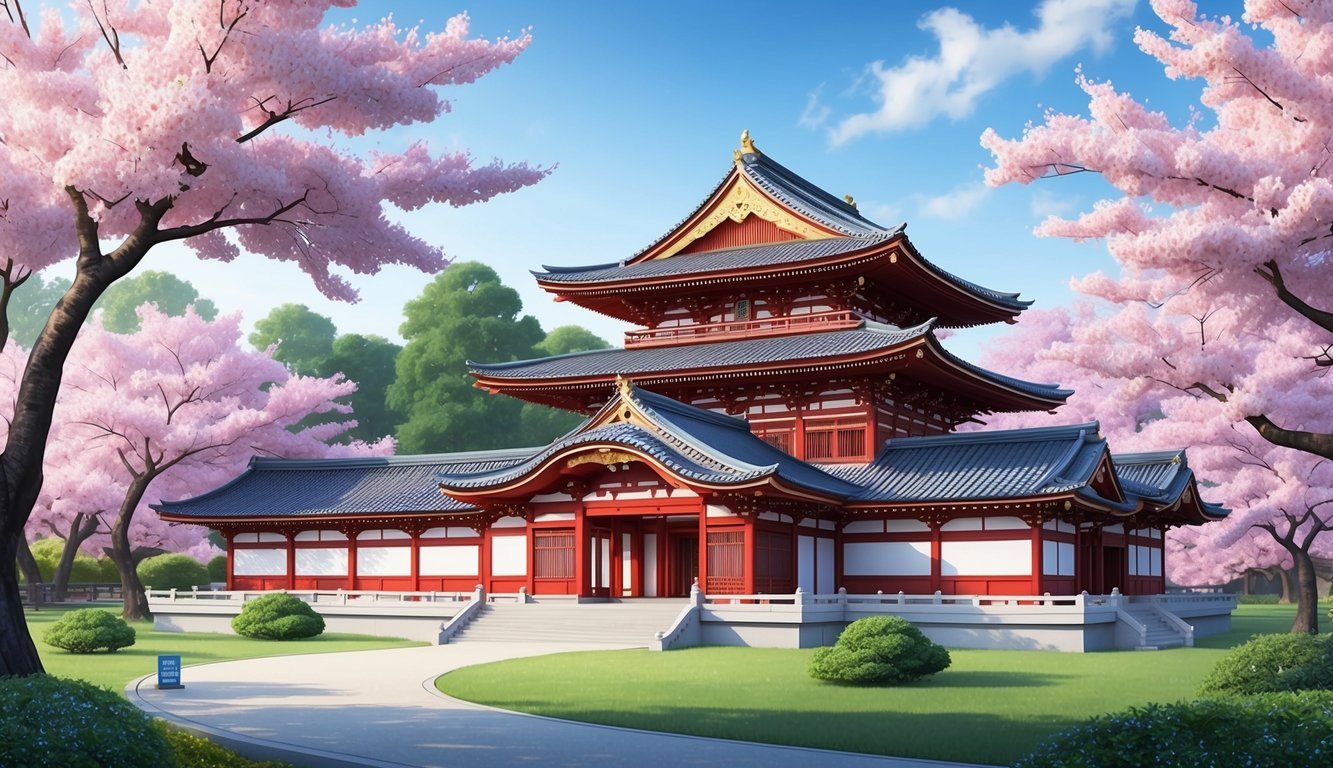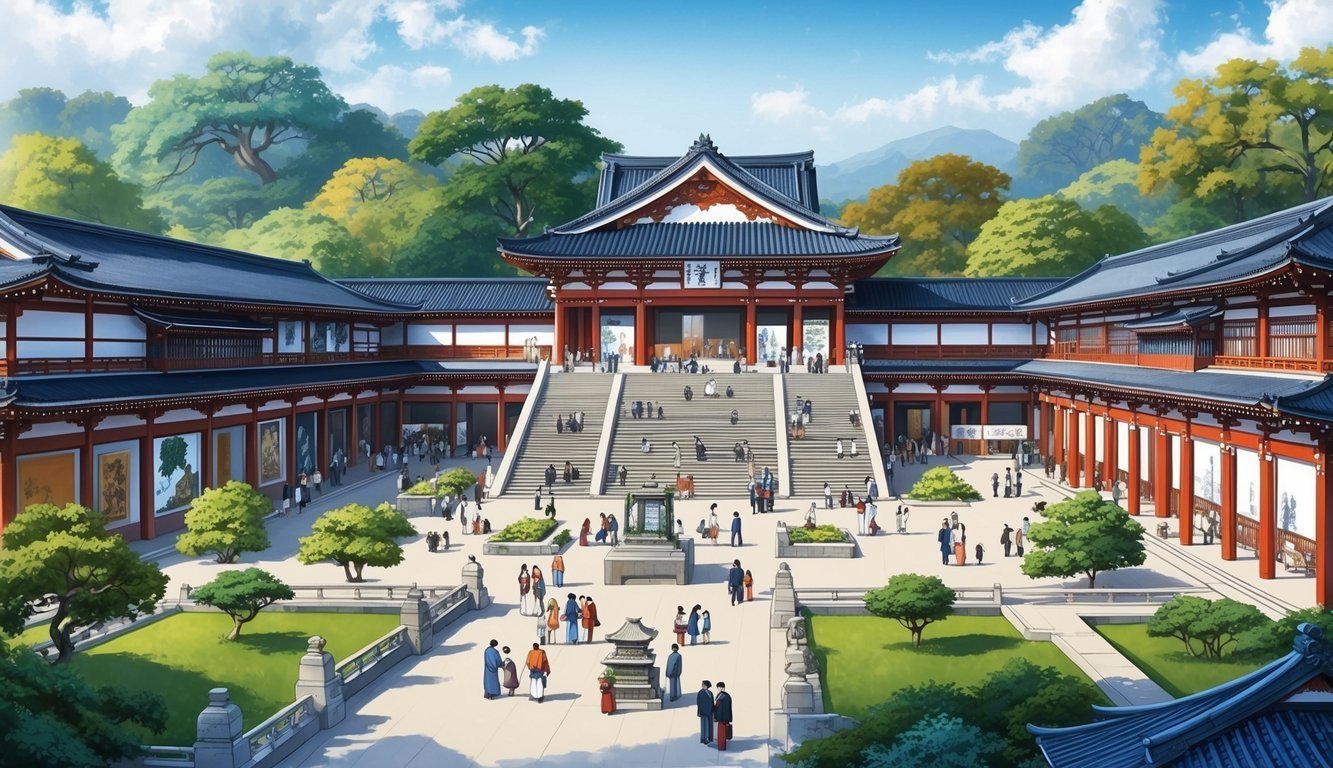When you visit Japan, its museums can enhance your experience of the country’s rich culture and history.
There’s something for everyone, from traditional art to modern animation.
Exploring these museums offers a unique glimpse into both Japan’s past and its contemporary creativity.
Whether you’re an art lover, a history buff, or just looking for an engaging way to spend your day, Japan’s museums have you covered.
With a variety of exhibitions to choose from, you can discover new interests and learn more about this fascinating nation while having a great time.
Cultural Significance of Japanese Museums
Japanese museums are more than just places to view art and artifacts.
They represent a deep connection to history and culture, offering insights that resonate today.
Exploring a museum can enrich your understanding of Japan’s past and present.
Historical Context
Japanese museums play a crucial role in preserving the country’s rich history.
Many, like the Tokyo National Museum, showcase ancient art and artifacts that date back centuries.
This helps you grasp the evolution of Japanese culture over time.
Museums often host collections related to significant events, such as feudal Japan or the Meiji Restoration.
Through exhibitions, you can learn how these events shaped contemporary Japanese identity.
Local museums also highlight regional cultures, showcasing unique traditions and histories that may be lesser-known.
With hands-on experiences and interactive displays, you get a vivid picture of Japan’s past, making history accessible and engaging.
Influence on Modern Society
Museums in Japan also play an important role in today’s society.
They spark curiosity and creativity among visitors.
Many people, especially students, use museums as a resource for education, making learning fun and interactive.
Exhibitions often blend traditional and modern art, encouraging discussions about cultural evolution.
This interaction helps bridge generational gaps, fostering appreciation for both classic and contemporary works.
Moreover, museums contribute to tourism, drawing visitors from around the world.
This influx supports local economies and promotes cultural exchange.
Engaging with museum programs, workshops, and events can deepen your connection to Japanese culture and inspire your own creativity.
Architectural Styles of Museums

When visiting Japanese museums, you’ll notice a fascinating mix of architectural styles.
From traditional designs rooted in history to modern structures that push creative boundaries, each museum tells its own story through its design.
Traditional Designs
Many museums in Japan feature traditional architectural styles that reflect the country’s rich heritage.
These buildings often use wood, paper, and clay, creating a sense of warmth and connection to nature.
Key features include:
- Tatami Rooms: Some museums have spaces with tatami mats, where you can experience the essence of Japanese culture.
- Shinto and Buddhist Influences: Elements such as sliding doors and curved roofs are common, echoing the designs of temples and shrines.
Visiting these museums helps you appreciate not just the exhibits, but also the craftsmanship and history that shape these beautiful spaces.
Modern Innovations
On the flip side, modern Japanese museums showcase innovative architectural styles.
These buildings often incorporate cutting-edge materials like steel and glass.
They focus on open spaces and natural light, blending art with the surrounding environment.
Some key aspects of these structures include:
- Sustainability: Many modern museums prioritize eco-friendly designs, using solar panels and green roofs.
- Unique Shapes: Expect to see unconventional forms that challenge traditional aesthetics—like the spiraling design of the Chichu Art Museum.
These modern museums not only house incredible collections but also stand as works of art themselves, pushing the boundaries of what museum architecture can be.
Frequently Asked Questions
Visiting museums in Japan is an exciting journey.
From fantastic art collections to unique interactive experiences, there’s a lot to discover.
Here are some common questions that might help you plan your visit.
What are some must-see museums in Tokyo?
When in Tokyo, don’t miss the Ghibli Museum, dedicated to the beloved films of Studio Ghibli.
The National Art Centre also stands out with its impressive collection of contemporary art.
Finally, the Tokyo Photographic Art Museum showcases stunning photography and offers a glimpse into the city’s vibrant culture.
Which museum in Japan has the most extensive collection?
The Tokyo National Museum holds the title for the most extensive collection in Japan.
It features over 110,000 items, including ancient art, samurai armor, and traditional ceramics.
This museum offers a deep dive into Japan’s rich history and cultural heritage.
What’s the coolest interactive museum to visit in Japan?
You should check out the teamLab Borderless in Tokyo.
This digital art museum features immersive and interactive exhibits that blend technology and creativity.
You can walk through rooms that respond to your movements, making it a truly unique experience.
Can you recommend some top art museums in Kyoto?
In Kyoto, the Kyoto National Museum is a must-visit for its stunning exhibits on Japanese art.
The National Museum of Modern Art also showcases contemporary works from Japanese artists, providing a nice contrast to traditional art forms.
Which museums in Japan offer the best traditional exhibits?
The traditional exhibits at the Edo-Tokyo Museum bring history to life with their detailed displays of life in the Edo period.
Additionally, the Kyoto National Museum features many traditional artifacts that tell the story of Japan’s past.
Are there any unique museum experiences in Japan that shouldn’t be missed?
Consider visiting the Cup Noodles Museum in Yokohama.
At this museum, you can create your own custom cup noodles.
Also, the Ramen Museum is a fun stop that allows you to sample different ramen styles from across Japan.
These experiences add a fun twist to your museum visits.

